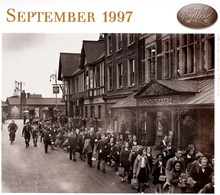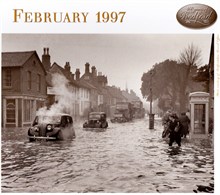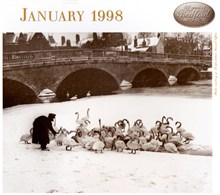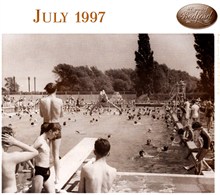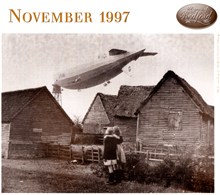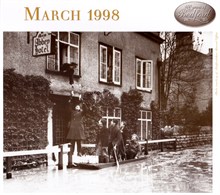Dame Barbara Cartland
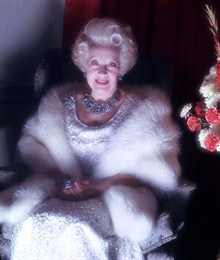 By the second year of my Calendar
Period I had all the production aspects covered. I felt
comfortable sourcing the photographs, whether new and in colour, or
old and in sepia tones (see foot of page). I was selling a
thousand copies of each calendar and knew how much to pay out, in
order not to lose out. I could drum up publicity when needed
in the local press and with regional TV. What I needed now
was some star dust to go with the commerce!
By the second year of my Calendar
Period I had all the production aspects covered. I felt
comfortable sourcing the photographs, whether new and in colour, or
old and in sepia tones (see foot of page). I was selling a
thousand copies of each calendar and knew how much to pay out, in
order not to lose out. I could drum up publicity when needed
in the local press and with regional TV. What I needed now
was some star dust to go with the commerce!
So I sent the calendars to well known people with Bedford connections. Among them were Christopher Fry the playwright, Dame Barbara Cartland and Ronnie Barker. Each of whom had reached a certain age in the 1990s and enjoyed reflecting on their Bedford connections.
Barbara Cartland had spent her Second World War based in Great Barford, a village near Bedford. She had initially flown out to the United States with her two children at the beginning of the War but decided that this could not satisfy her sense of duty nor, indeed, adventure. So in 1940, she brought her young family back to this village and installed them in a building called River Cottage on the River Ouse.
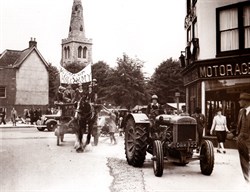 I had already made contact with Dame Barbara in 1994 but in 1998, this
connection developed further through this nostalgic photograph of
the Bedfordshire Women's Land Army driving through Bedford town
centre in 1940. I had met Mildred Hull (sitting next to the
driver of the cart) as a resident in a nursing home near Bedford.
Mildred recognised herself sitting next to the man driving the
horse and cart. She remembered this particular moment because
it was the day Princess Elizabeth visited Bedford. Mildred
had, for good measure, helped ring the bells in St Paul's church
(behind the cart) to welcome the princess to the town.
I had already made contact with Dame Barbara in 1994 but in 1998, this
connection developed further through this nostalgic photograph of
the Bedfordshire Women's Land Army driving through Bedford town
centre in 1940. I had met Mildred Hull (sitting next to the
driver of the cart) as a resident in a nursing home near Bedford.
Mildred recognised herself sitting next to the man driving the
horse and cart. She remembered this particular moment because
it was the day Princess Elizabeth visited Bedford. Mildred
had, for good measure, helped ring the bells in St Paul's church
(behind the cart) to welcome the princess to the town.
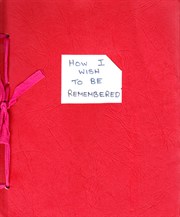 During the War, Mildred had worked on a farm in
Great Barford opposite River Cottage and had delivered milk to all
the houses in the area as part of her duties as a Land Army girl,
for no wage. I sent Dame Barbara the calendar plus the story
and shared the news that the sprightly Mildred still played the
piano for her fellow residents at the Home.
During the War, Mildred had worked on a farm in
Great Barford opposite River Cottage and had delivered milk to all
the houses in the area as part of her duties as a Land Army girl,
for no wage. I sent Dame Barbara the calendar plus the story
and shared the news that the sprightly Mildred still played the
piano for her fellow residents at the Home.
Dame Barbara sent me this letter in response, signing as she always did in bright red ink. She also sent a couple of her signed novels which were auctioned off to help raise money for the disability guides I produced. She sent me a copy of "How I wish to be Remembered" an unedited set of her memoirs. In the 50 typewritten pages, she includes a list of the 16 things she'd like to be remembered for. The first on her list, is not surprisingly, her novels "through which I have tried to give Morality, Beauty and Love to the world" (when she sent me her memoirs, she had already sold 600 million copies of her romances worldwide). I especially like number five in her list of things she'd like to be remembered for.
Dame Barbara died a few years later in May 2000 at the grand old age of 98. She was an extraordinary life force who always made the effort to encourage people, even strangers like me. Note that Dame Barbara's novels are still available online
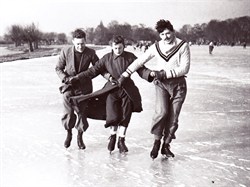 Below, are some of the pictures that I sourced
from the Bedfordshire Record Office, the archives of Bedford
Central Library and the personal collections of Bedford
photographers for the 1997 and 1998 calendars. I spent weeks
holding up glass or photographic negatives, usually 3" by 5" and
sometimes 8" by 10" against the light trying to figure if they were
worth spending money on having them converted into prints. One of
my favourites is this one alongside of three friends skating on a
frozen lake in 1955 - love that cricket jumper and the symmetry of
their pose. The other favourite, for its poignancy, is that of the
evacuees arriving in Bedford off the London train, each with an
identifying label attached to their coats and each destined to
spend six years away from their parents.
Below, are some of the pictures that I sourced
from the Bedfordshire Record Office, the archives of Bedford
Central Library and the personal collections of Bedford
photographers for the 1997 and 1998 calendars. I spent weeks
holding up glass or photographic negatives, usually 3" by 5" and
sometimes 8" by 10" against the light trying to figure if they were
worth spending money on having them converted into prints. One of
my favourites is this one alongside of three friends skating on a
frozen lake in 1955 - love that cricket jumper and the symmetry of
their pose. The other favourite, for its poignancy, is that of the
evacuees arriving in Bedford off the London train, each with an
identifying label attached to their coats and each destined to
spend six years away from their parents.
